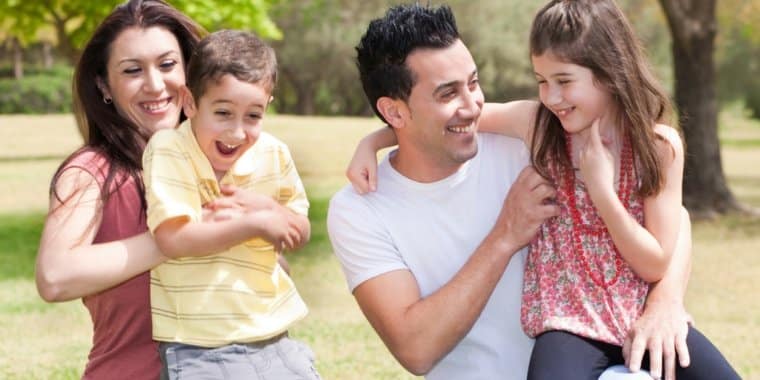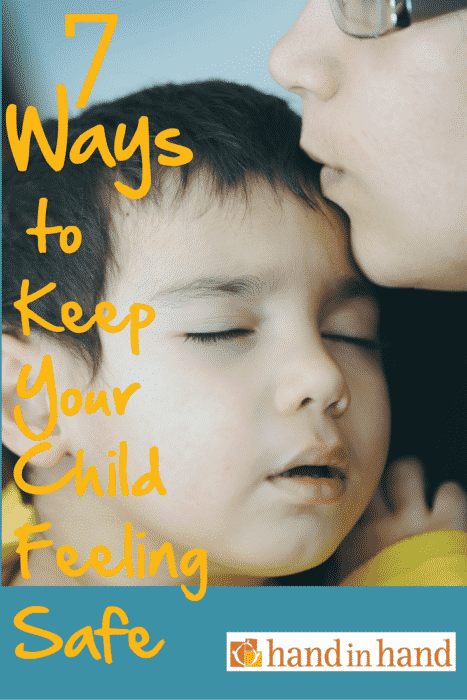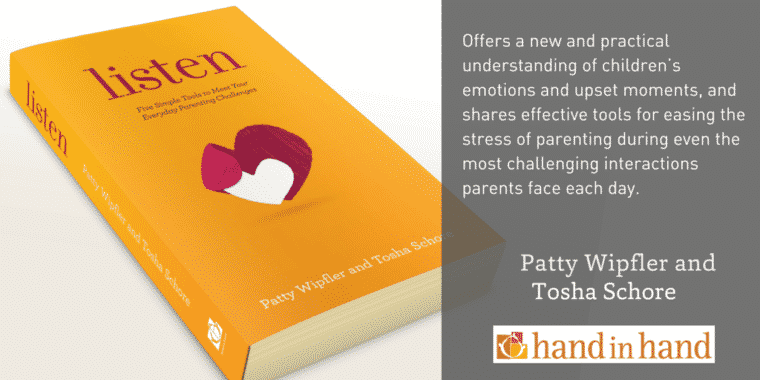![]()
If your child has become frightened by the tones, words, or images seen in the media lately, at home, or from peers, he or she will find ways to bring up those fears that may be indirect.
You might notice a sadness or weight about your child. Or his behavior may be off-track. He might be teasing or whiny or prone to tantrums. For instance, he may get upset over not getting to sit on your lap during dinnertime, or he may have a tantrum about not being able to find the shoes he wanted to wear today. Or, he may be sad, finding reasons to cry or even waking up crying in the night to cry.

Take Time and Listen
Our children need us to listen at these times, to stay close and reassure them while they feel their feelings in a big way. “You can sit on my lap after dinner, I promise,” said with a relaxed tone, will let your child cry and fight, releasing the feelings of fear and tension until your reassurance sinks in.
“We'll find your other shoe, but right now, I don't know where it is,” will work just fine to give him an outlet for his fears and worries.
Children Cry in Your Safety
Children need these small upsets to serve as “can openers” for the emotions they have stored away. They usually choose a safe family time, like dinnertime or bedtime, or a challenging time, like leaving for school or day care in the morning, to crack an upset open so they can offload the feelings and then sense that they are safe again.
When you listen, you can expect the feelings to last a good while.
The warmer and more loving you are, the more intense the feelings will become.
Creating a Plan for Safety
 Going forward, children need to be told explicitly that they are safe, that you will keep them safe, and that you will do what you can to help people work together so harmful things don't happen.
Going forward, children need to be told explicitly that they are safe, that you will keep them safe, and that you will do what you can to help people work together so harmful things don't happen.
It is important for our children to see that we care about people, about justice in the world, and about bringing an end to people harming each other.
If you are upset, go ahead and cry openly, but without detailed explanation of your feelings. “I'm sad about something I heard on the news” is fine, along with “and I just need to cry for a little while to get the sadness out.”
If threat is a daily stressor, they need to know that someday, things will be better, and that they will be able to heal from how frightening times feel right now.
Children need to see that we don't give up loving, caring, and working to make life good in our families and our communities when times are tough.
Your seven-step plan for creating safety with your children:
- Explain current events in general terms, and in terms that your child can understand. Explain that you have feelings about it, too, and that you will be talking to other grownups to take care of your upsets about it.
- Shield them from the media. TV reports, newspaper photographs, and radio commentary can communicate that adults do not feel safe, in charge, or trustful of others. Get your news after the children have gone to bed, or while you're commuting in your car.
- Re-Examine Good and Bad. We need to let our children know that we all are good, and yet we all do things that are “off track” when we feel hurt or afraid. Casting people as good and some as bad is a construct that promotes misunderstanding and is used to market injustice in today's world. The attitude that some people are evil and deserve discrimination is one that we, as a human race, must replace so that we can live peacefully with each other.
- Give Hope. Our older children need to know that some groups are targeted for mistreatment, but if a whole group of people organizes and works for justice, with respect as a guiding principle, they can create justice without promoting violence, even when the situation doesn't look hopeful.
- Carry On. Concentrate on the present moment, the tasks and routines of every day, and on the goodness of being together and enjoying one another.
- Be Special Together. “Together” is the watchword for dealing with news of violence or death. “What can we do together, as a family, to bring change?” is a healing, empowering question. Ask your children for their ideas. Offer a few of your own suggestions.
- Demonstrate caring, all together, bonds you closely as a family. Respect and employ your child’s ideas, and the power of your caring.
As parents, we know that it takes a great amount of person-to-person love, work, and commitment to keep even a small group of people working cooperatively together.
The skills we develop, as parents, are the same skills needed to heal our human community, person by person.
May we draw closer to each other. May we draw closer to people whose lives seem to be different from our own. May we listen with compassion to heal the hurts that divide us, and right the injustices that caused them.
From the Hand in Hand Toolbox
Talking tantrums: Find out why fear can cause tantrums and cries and what you can do
Fighting back against racism: Hand in Hand stands with Black people and with all people targeted by racism. Here's what Hand in Hand is doing to combat racism, build safer communities and heal from past hurts together, and how you can affect change. Read it now.
Peaceful connected parenting: Learn five tools that will revolutionise your parenting and make it less stressful.
